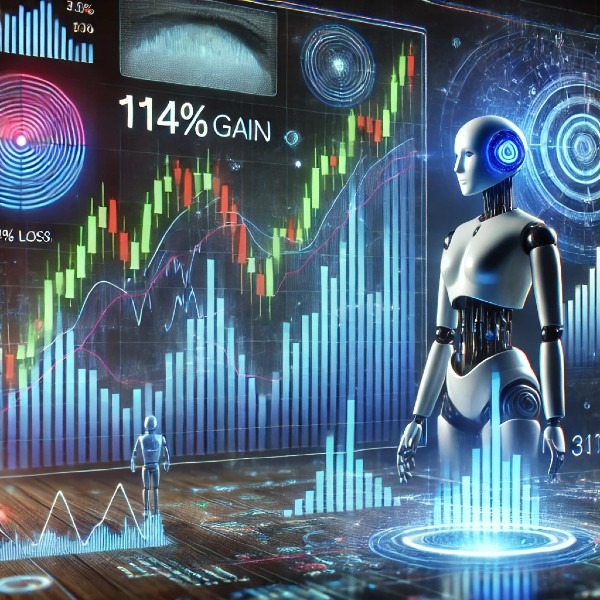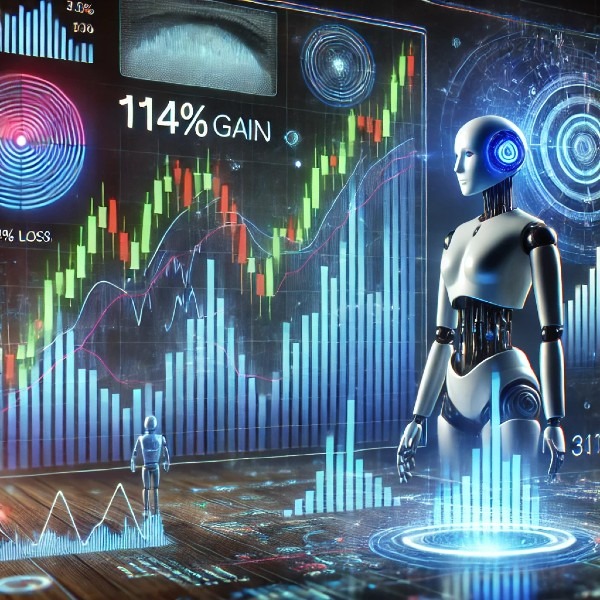Black Box AI might sound like a mysterious term straight out of a science fiction novel, but it’s actually a fascinating aspect of today’s technology. Imagine a highly intelligent system that can make decisions, solve problems, and even learn new things, but the way it does all this is not fully clear to us. That’s what Black Box AI is – an AI system whose inner workings are somewhat of a mystery. It’s a bit like a magician who won’t reveal his secrets, yet performs astonishing tricks.
In this blog post, we will explore how Black Box AI plays a role in various fields such as finance, ignites the curiosity of tech enthusiasts, advances the field of robotics, and ties into the important concept of ethical AI. Our aim is to break down these complex topics into understandable parts, making them accessible even if you’re just getting started with AI. Let’s dive in and discover the exciting world of Black Box AI!
Finance
In finance, Black Box AI is like a wizard with numbers. It analyzes heaps of financial data – things like stock market trends, economic indicators, and more – to make predictions or decisions. This is incredibly useful for financial institutions and investors because it helps them make smarter, data-driven decisions, potentially leading to better financial outcomes.
However, the mystery of how Black Box AI reaches these decisions can be a double-edged sword. If a bank uses it to approve or deny loans, customers might not understand why they were rejected if the AI’s decision-making process isn’t transparent. It’s important for financial institutions to balance the power of Black Box AI with the need for clarity and fairness in their decision-making processes.
Tech Enthusiasts
For tech enthusiasts, Black Box AI is like a puzzle waiting to be solved. It represents the cutting edge of technology, where advanced AI systems can perform tasks that even their creators might not fully understand. This sparks curiosity and drives innovation, as tech enthusiasts and professionals strive to unravel the mysteries of these AI systems and improve upon them.
The challenge for these enthusiasts lies in the AI’s complexity. As AI models become more advanced, they often become harder to interpret, turning them into the so-called ‘black boxes’. This can be both exhilarating and frustrating for those who love to understand exactly how technology works.
Robotics
In robotics, Black Box AI is a key player. It’s what allows robots to learn from their experiences, adapt to new environments, and make autonomous decisions. Imagine robots that can navigate complex terrains, perform delicate surgeries, or assist in disaster relief efforts – all powered by Black Box AI.
However, the use of Black Box AI in robotics also brings up important safety and reliability concerns. If we don’t fully understand how a robot is making decisions, how can we trust it to operate safely and effectively? This is a crucial question for researchers and engineers in the field of robotics, highlighting the need for both advanced AI capabilities and transparency.
Myths vs. Facts about Black Box AI
Myth 1: Black Box AI is Always Unreliable
Fact: Black Box AI can be incredibly reliable in its performance, often exceeding human capabilities in tasks like data analysis and pattern recognition. The challenge lies more in understanding its decision-making process than in its reliability.
Myth 2: Black Box AI is Too Complex to be Useful
Fact: Despite its complexity, Black Box AI is tremendously useful. Its ability to process vast amounts of data and identify patterns that humans might miss makes it a valuable tool in various fields, including healthcare, finance, and technology.
Myth 3: Black Box AI is Inherently Unethical
Fact: The ethicality of Black Box AI depends on how it’s used. While there are concerns about transparency and accountability, these are being addressed through advancements in the field of ethical AI, which aims to make AI systems more understandable and fair.
FAQ Section
Q1: What is Black Box AI?
Black Box AI refers to AI systems whose internal workings and decision-making processes are not easily understandable or visible. It’s like a complex computer program that can make smart decisions, but exactly how it does so is not fully clear.
Q2: How is Black Box AI used in finance?
In finance, Black Box AI is used to analyze large amounts of data to make predictions about market trends, assess credit risks, and make trading decisions. Its ability to process and analyze data far exceeds human capabilities, making it a powerful tool in financial decision-making.
Q3: Why are tech enthusiasts interested in Black Box AI?
Tech enthusiasts are fascinated by Black Box AI because it represents a frontier of technology that challenges our understanding of AI. They are driven by the desire to decipher how these systems work and to push the boundaries of technological innovation.
Q4: What role does Black Box AI play in robotics?
Black Box AI enables robots to learn from their experiences, adapt to new tasks, and make decisions autonomously. This is crucial in developing robots that can perform complex tasks and operate in diverse environments.
Q5: What is ethical AI and how does it relate to Black Box AI?
Ethical AI refers to the development and use of AI in a way that is fair, transparent, and accountable. It’s particularly relevant to Black Box AI, as there’s a growing need to ensure that AI systems are not only efficient but also understandable and ethical in their decision-making.
Google Snippets
Black Box AI
Black Box AI is a type of AI where the decision-making process is not transparent. It’s used in various industries for its sophisticated data analysis capabilities, despite challenges in understanding how it makes decisions.
AI for Tech Enthusiasts
For tech enthusiasts, AI represents a field of endless exploration and innovation. It involves developing and understanding advanced technologies, including Black Box AI, that can perform complex tasks and drive technological progress.
Robotics and AI
Robotics and AI involve the integration of artificial intelligence into robotic systems, enabling robots to perform tasks autonomously and adaptively. Black Box AI plays a significant role in advancing these robotic capabilities.
Black Box AI Meaning from Three Different Sources
Technology Review: Black Box AI is a type of artificial intelligence where the reasoning behind decisions and actions is not transparent or easily understood. It’s like a sophisticated system whose thought process is hidden.
Educational Tech Journal: Black Box AI in education refers to AI systems whose decision-making processes are not fully clear. They are used in various educational tools and platforms, but their internal logic can be complex.
Popular Science Magazine: Black Box AI is often described as AI systems that are effective in their tasks but do not provide insight into how they reach their conclusions, making it challenging for users to predict or understand their behavior.
Did You Know?
- The term “Black Box” in Black Box AI originally comes from aviation, where flight recorders are called black boxes because they’re difficult to understand until thoroughly analyzed.
- Black Box AI systems are capable of analyzing more data in a day than a human could in a lifetime, making them powerful tools in data-driven fields.
- The emerging field of “Explainable AI” seeks to make AI more transparent and understandable, addressing one of the key challenges of Black Box AI.
In conclusion, Black Box AI is a pivotal aspect of modern technology, influencing fields like finance, robotics, and the realm of tech enthusiasts. While it offers tremendous potential for innovation and efficiency, it also raises important questions regarding transparency and ethics. As we continue to advance in the world of AI, it’s crucial to maintain a focus on developing AI that is not only powerful but also ethical and understandable, ensuring its benefits are realized responsibly and fairly for all.
References
- Explainable AI that uses counterfactual paths generated by conditional permutations of features. This method is used to measure feature importance by identifying sequential permutations of features that significantly alter the model’s output. The paper discusses the evaluation strategy of comparing the feature importance scores computed by explainers with the model-intern Gini impurity scores generated by the random forest, which is considered as ground truth in the study.
- Thinkful offers insights on how to address the “black box” problem in AI through Explainable AI (XAI) and transparency models. They discuss techniques like Feature Importance Analysis, Local Interpretable Model-agnostic Explanations (LIME), SHapley Additive exPlanations (SHAP), Model Distillation, and Decision Rules, which are designed to make AI models more interpretable and transparent. This is especially important in applications where decisions can have far-reaching consequences, such as healthcare or finance








